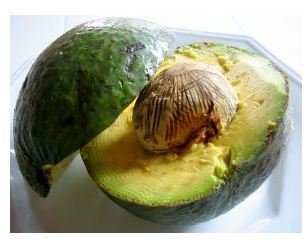Does a Healthy Diet for Children Include Fat?: Healthy Fat Intake for Children
Are All Fats Healthy?
Fatty acids are necessary for optimum health, much more so for children than adults. Unsaturated fats, which include both polyunsaturated and monounsaturated fats, are known as the good fats. They are heart healthy, increasing the body’s level of HDL (high-density lipoprotein) cholesterol and decreasing LDL (low-density lipoprotein) cholesterol levels. They also include the essential fatty acids - omega-6 and omega-3, which cannot be produced by the body and are vital for healthy skin, hair, and eyes, as well as the brain. Good sources of polyunsaturated fats include fish, walnuts, and vegetable oils. Monounsaturated fats are found in seafood, nuts, avocados, peanut and olive oil.
Animal products, such as meat and dairy are the main sources of saturated fats, but tropical oils, such as coconut and palm oil also fall into this category. Saturated fats are considered unhealthy because of their reputation for causing fatty build-ups in the arteries, a condition known as atherosclerosis, the precursor to heart disease. It is no wonder that the health community is wary of saturated fats considering that heart disease is the number one cause of death in America. More and more, children are beginning to contract conditions connected with a high fat diet, such as obesity, high blood pressure, and diabetes. The worry is, that these children will grow up to be adults with even more health problems.
Trans-fats should be avoided altogether. The by-products of hydrogenated oils, these are the true culprits of unhealthy plaque build-ups. Trans-fats are found in processed foods such as margarine, and packaged cookies and snacks.
Why Children Need Unsaturated and Saturated Fat
What are fats good for aside from manipulating the body’s cholesterol levels? Both unsaturated and saturated fat play a vital role on every level, from cell health to the well-being of one’s state of mind. On the most basic level, they are needed for warmth and energy production. Fats aid in digestion; they slow down the digestive process, allowing nutrients to be absorbed into the body. Many essential nutrients, such as vitamins A, D, E, and K are fat-soluble, meaning they are dependent on the presence of fatty acids to be utilized. Cell membranes could not function without fat - essential fatty acids provide the fluidity, while saturated fatty acids provide the structure.
Children, particularly young children, must consume enough fat for growth and brain development. The omega fatty acids should be a regular part of a healthy diet for children. Along with essential amino acids, they synthesize lipoproteins - the very building blocks of the human body. They are absolutely necessary for brain and nerve health, nourishing and protecting cells. Well over half of the brain is made up of fatty tissue. Essential fatty acids made up one quarter of the brain’s fat make-up. A diet lacking in the omega acids is linked to learning and behavioral problems in children.
Saturated fats contribute to the immune system as well as bone health, as they are necessary for calcium absorption. Lauric acid and capric acid are two fatty acids with antiviral and antibacterial properties, helping to ward off infection. They are found in breast milk, milk fat, coconut oil, and palm oil. Just like the essential fatty acids, growing children need saturated fatty acids for proper brain and nervous system development. This is why breast milk is rich in saturated fat as well as cholesterol; babies require this high fat content to thrive.
Although we are told as adults to avoid too much fat, especially saturated fats, children have different needs. They in fact burn fat very quickly. In one study of ten adults and ten children, both groups were given the same amount of fat. They also both remained relatively sedentary. The study found that the children burned more fat, even without being active. Fat standards are simply different for different age groups.
What is a Healthy Fat Intake for Children?
Children definitely can benefit from fat, but how much is too much? Very young children, those under two years of age, do not require fat restrictions. Keep in mind, nature’s diet, breast milk, is fifty percent fat, with significant amounts of saturated fat. Once they reach two years, saturated fat should only make up about 10% of the diet. Between two and three years of age, 30-35% of a toddler’s diet should consist of fat. In grams, this is anywhere from 33-54 grams of fat per day. Whole milk is wonderful for young children; avocados, cheese, fish and meat, nuts and legumes are all part of a well-balanced diet.
A healthy fat intake for older children is not as high; from four to eighteen years they only need from 25-35% of their calories from fat. From four to eight years of age, this is usually anywhere from 39-62 grams; from nine to thirteen, 62-85 grams; and, teenagers should eat 55-78 grams for girls, and 61-95 grams for boys.
It is simple to incorporate fats into a child’s diet - toast with butter, broccoli and cheese, walnuts and apple slices. A natural, balanced diet, rich in whole foods is the easiest way to ensure your child’s health and well-being.
Sources:
Page, Linda. “Healthy Healing: A Guide to Self-Healing for Everyone” (Traditional Wisdom, 2003).
“Fat ‘crucial’ in children’s diet” BBC News. (August, 2007)
